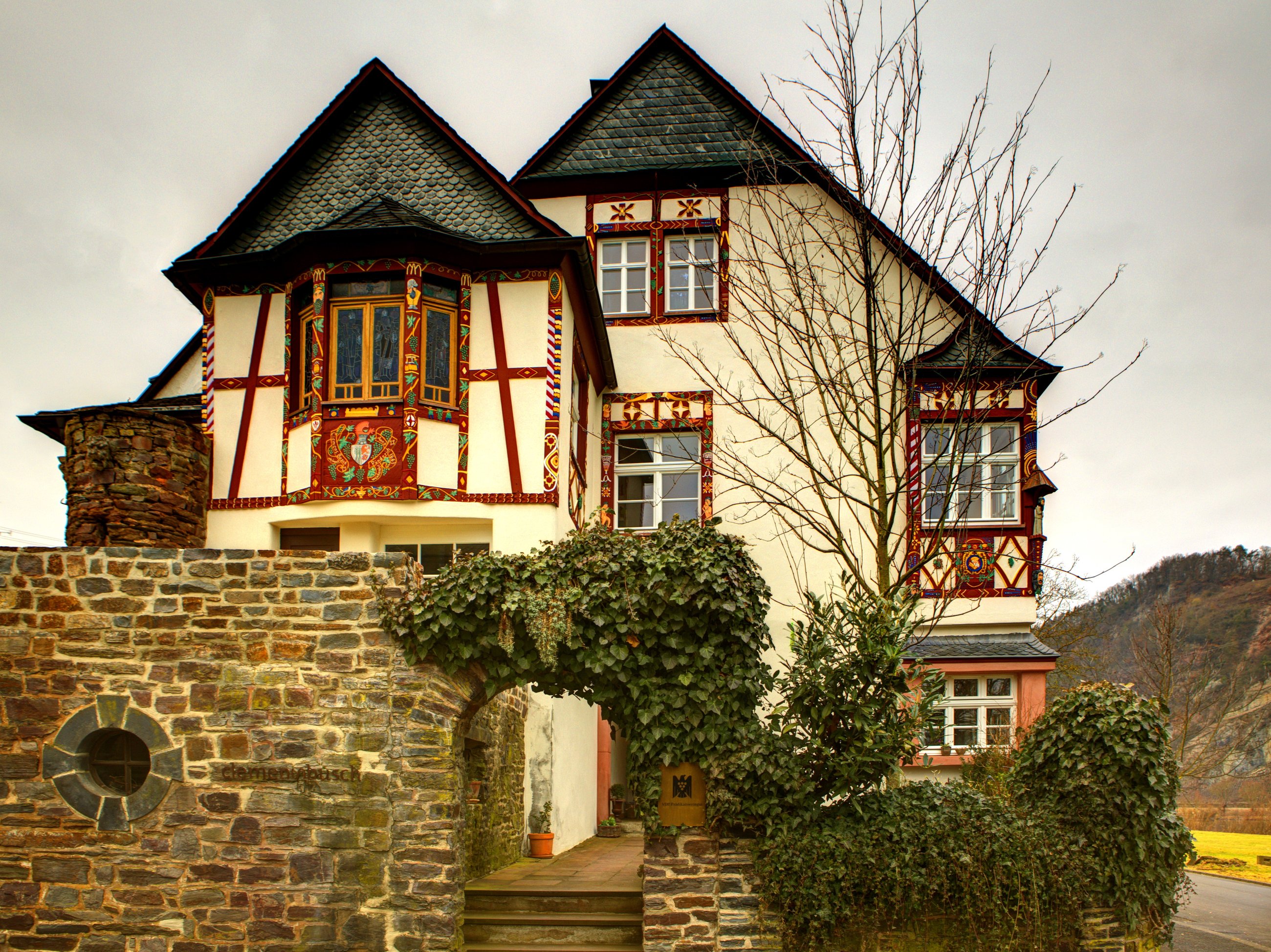#3868. Romantic Half-timbered Facade with Stone Foundation and Jugendstil Decorative Elements
The presented facade exemplifies a magnificent specimen of traditional German half-timbered construction with elements of the Jugendstil (Art Nouveau) style. The building features an asymmetrical composition and complex roof geometry with pointed gables covered in dark tiles, giving the structure visual dynamics and expressiveness.
The facade is executed in classic half-timbered technique with its characteristic structure: a wooden frame of dark red beams contrasts with white plastered wall surfaces. Of particular value is the rich ornamental decoration framing the window openings and bay windows. The color accents of red-orange details against the light background create a traditional yet festive appearance.
The architectural composition is enriched by a projecting bay window with panoramic glazing, adorned with stained glass and decorative elements. Notable is the integration of stonework in the lower part of the building — a substantial stone wall of irregular local stone blocks with a circular rose window forms the plinth and entrance area, creating a visual transition between architecture and landscape.
The green ivy embracing the stone wall and arched entrance organically connects the structure with its surroundings, softening the transition between man-made architecture and the natural landscape of the hilly terrain in the background. This emphasizes the romantic character of the building, characteristic of southern Germany, and demonstrates a harmonious synthesis of historical building traditions with decorative Art Nouveau elements from the early 20th century.
